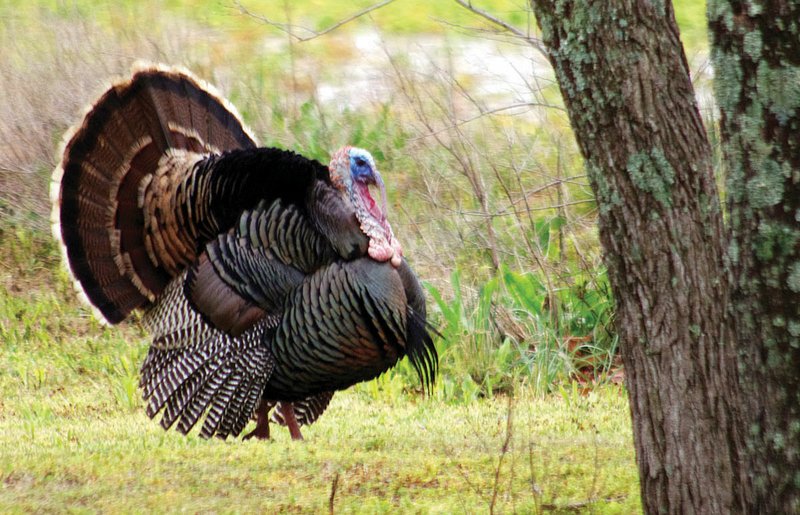Spring turkey season opened Monday, and many hunters have scouted out new territory to bag a gobbler.
Here are a some top prospects for hunters to scout and put together a plan for the season.
The name of the game when it comes to turkey hunting is space. Putting some distance between you and the next hunter is essential to get your chance at a bird this spring. Setting up too close to another hunter can spook the birds and, even worse, shut down the natural gobbling that will take place.
Arkansas has nearly 3.2 million acres of publicly accessible land for hunters to spread out and search for a bird of their own.
According to the Arkansas Game and Fish Commission's 2019 turkey report, the following wildlife management areas had the highest turkey harvest:
• Ozark National Forest -- 126,889 acres, 67 harvested gobblers
• Sylamore -- 170,000 acres, 63 harvested gobblers
• Muddy Creek -- 146,202 acre, 60 harvested gobblers
• Winona-- 160,000 acres, 45 harvested gobblers
• Mount Magazine -- 120,000 acres, 39 harvested gobblers
All but one of these areas is open to turkey hunting during the season without a specially drawn permit. Sylamore has a special permit hunt that runs through Wednesday, but has an open season without a permit that starts Saturday and runs through April 28. A free, general use wildlife management permit and valid hunting license are all that's needed to hunt during the entire turkey season on the other four areas.
"We have smaller wildlife management areas where hunters have decent success, but we must manage them through drawn permits to keep them from becoming too crowded for a quality hunt," said Jeremy Wood, turkey program coordinator for Game and Fish.
Wood, an avid turkey hunter, has a few tips for someone scouting areas for the first time.
"You can have a high-quality hunt at many of Arkansas' wildlife management areas," Wood said. "You may not take a bird, but those who put in the extra time scouting before the season always have a better chance of getting within range or hearing a mature gobbler."
Each of the top five turkey hunting wildlife management areas also is owned by the U.S. Forest Service and is managed for wildlife through a cooperative agreement with Game and Fish.
"It really is the size of these big wildlife management areas more than anything else that creates the higher harvest totals," Wood said. These are almost 10 times as large as some of the Game and Fish-owned areas, and they're mostly large blocks of contiguous habitat."
The remote nature and topography of these large areas make them more rugged than some areas hunters in the southern or eastern half of the state may be familiar with. Wearing out the boot leather is always a part of turkey hunting, but the ups and downs of the Ouachita and Ozark mountains can make it even more difficult to get to your bird, Wood said.
"Be prepared for dirt and gravel roads and rough conditions. The main roads are going to be better, but as you branch off, there are some low-water crossings, some areas may be rougher and some older logging roads may be closed," Wood said.
"Be sure to download Forest Service road maps to make sure you know which roads you can drive on. Many of the older roads might be good options to find wildlife openings where birds might be strutting as well."
Wood said the best way to scout these large areas is to simply listen in the early morning for gobbling activity.
Sports on 04/14/2020

